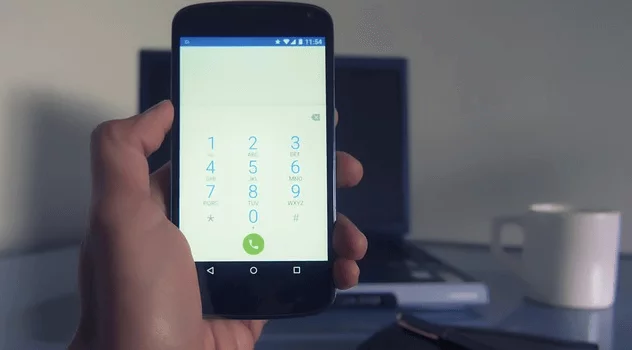| Features | 3G | 4G |
| First Use | R&D started in 1980s, development took 15 years | 2007-09 |
| Data Speed | Avg. speed is around 384 Kbps. Min. and Max. speed varies b/w 144 Kbps and 42 Mbps | Avg. download speed is around 100 Mbps and upload speed around 50 Mbps |
| Network Standards | UMTS | LTE and LTE-A |
| Switching Technique | Packet Switching Technique | Packet Switching along with message switching |
| Network Architecture | UMTS | LTE and LTE-A |
| Frequency Band | 850/900/1700/1900/2100 MHz | Any of the 44 bands |
| Reach | High | Limited |
| Services & Applications | CDMA 2000, UMTS, EDGE, etc. | Wimax2 and LTE-Advance |
| Forward Error Correction | Use Turbo Codes | Use Concatenated Codes |
Gone are those days when mobiles were used to make voice calls. In today's time, one can not only make voice calls through his mobile phone, but also make video calls, send instant messages, pay bills, click photos, record videos, and most of the things that earlier required a laptop or personal computer.

With the passage of time, mobile phones have transformed into smartphones and basic internet connection has transformed into 3G and 4G. People often use either of these two network connections, but hardly know the difference between 3G and 4G, except that of data speed.
Evolution of Mobile Signal in the Last Decade
Remember those days when you would get G, E, H, etc. signals in your mobile phones? Today, everyone craves for 4G data connection but this evolution from G to 4G has been onerous.
G stands for GPRS, which is the slowest possible speed in any mobile phone. E signifies EDGE or Enhanced Data Rates for GSM Evolution. Some call it enhanced GPRS. The data speed of E is better than G (2G) but lesser than 3G. You can see many people referring to it as 2.5G in India. The 3G or third generation mobile network technology is based on the GSM standards and uses the Universal Mobile Telecommunication System. The average speed of 3G comes around 384 Kbps while the maximum speed can go up to 42 Mbps.
The H sign stands for HSPA, which is an enhanced form of 3G. You can expect a higher data speed than basic 3G in HSPA network.
At present, the Indian telecom sector is going through a transition phase as all the companies are now moving from 3G to 4G to shape up their offerings and data speed. The average speed in 4G is claimed to be around 50 Mbps while the highest speed can go up to 100 Mbps. It follows LTE (Long Term Evolution) standard. The 4G connections based on LTE-A or Long Term Evolution-Advanced standards can offer the highest data speed of up to 1 Gbps. India is far from adapting this standard at present, but countries like US, UK and Japan use LTE-A standard based data connections to power critical projects.
Also read: Difference between G, E, 3G, H, H+ and 4G symbols
When asked about the major differences between 3G and 4G technology, most of the users are often taken aback. They hardly know any difference between these two except data speed.
Here are a few points that can help them:
First Use
3G technology is the result of backbreaking R&D work done by the International Telecommunication Union during the 1980s. All the standards required for 3G were developed in about 15 years. However, 4G runs on two standards -- Mobile WiMAX standard and Long Term Evolution. The Mobile WiMAX standard was first claimed to be used in South Korea in 2007 while LTE was first used in Norway and Sweden in 2009.
Internet Speed
Apart from their emergence, data speed is another major difference between 3G and 4G. The average speed of 3G connection is somewhere around 384 Kbps, while the lowest and highest speeds range between 144 Kbps to 42 Mbps. Indian 3G networks hardly touch the highest speed level.
In the case of 4G, the maximum upload speed (on paper) can go up to 50 Mbps while the downloading speed (on paper) can touch 100 Mbps. 4G connections based on LTE-A standards can touch the maximum downloading speed of 1 Gbps.
Also read: CDMA VS GSM: Which platform should you pick?
Network Standards
3G networks follow UMTS or Universal Mobile Telecommunications System standard, while 4G runs on LTE (Long Term Evolution) and LTE-A (Long Term Evolution Advanced).
Switching Technique
3G networks use packet switching technique while 4G networks use Packet Switching along with message switching. Packet Switching is a method used for digital networking communications. It groups the entire transmitted data into different blocks called packets, which are then transmitted by a medium that can be shared by more than one simultaneous communication session.
Network Architecture
Network architecture used in 3G connections is based on cells. When it comes to 4G connections, the network architecture is based on integration of WLAN and WAN.
Frequency Band
3G is deployed on 850/900/1700/1900/2100 MHz bands while 4G services can be deployed on any of the 44 frequency bands identified by ITU.
Reach
Companies have just begun rolling out 4G in India; hence, its reach is not as much as the 3G network. However, telcos like Bharti Airtel and Reliance are trying their best to make 4G available in all parts of the country.
Services and Applications
3G covers CDMA 2000, UMTS, EDGE, etc. while 4G covers Wimax2 and LTE-Advance.
FEC (Forward Error Correction)
All the 3G connections use Turbo codes for the error correction while 4G connections use Concatenated codes. This is the main reason why 4G offers flawless communication experience as compared to 3G connections.
These are some of the major differences between 3G and 4G network technologies. However, one can figure out many more differences based on his/her personal use and experience.















